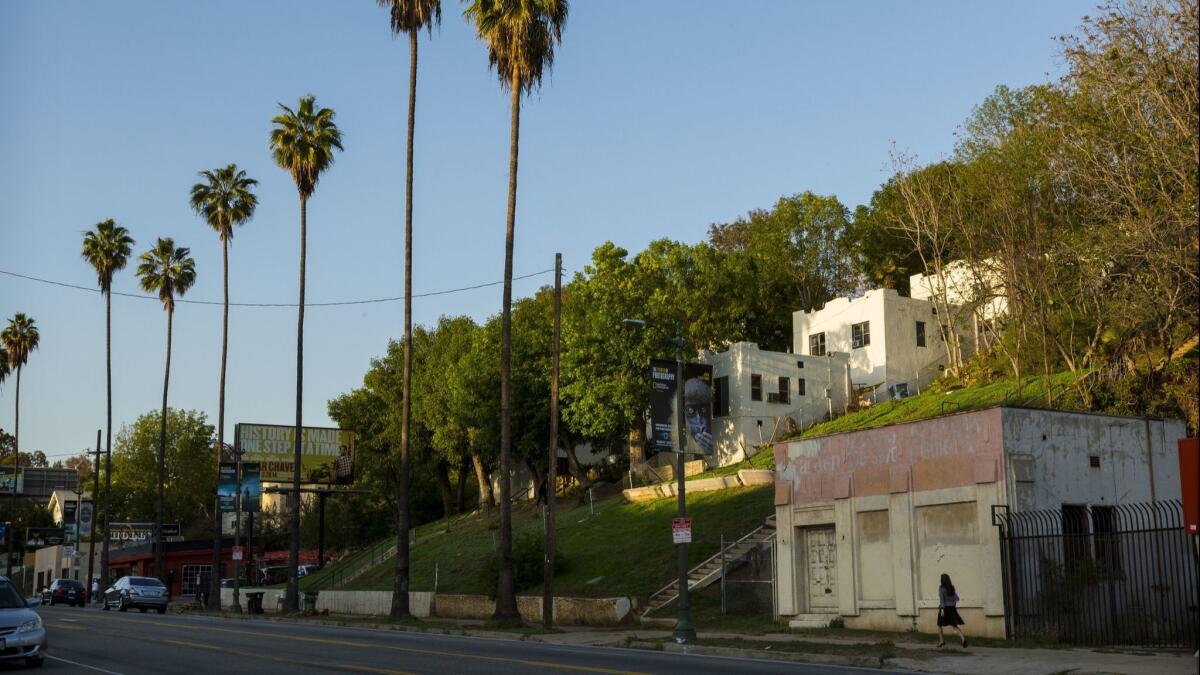Op-Ed: No, rent control doesn’t always reduce the supply of housing

- Share via
Conventional wisdom holds that no self-respecting economist could ever support rent control. But to the surprise of my colleagues, this economics professor is voting yes on Proposition 10. The market conditions are right, and local rent controls could serve as a powerful complement to a statewide strategy to increase our housing supply, while also providing relief to renters who need it the most.
In the first week of Econ 101, students learn that price controls restrict supply. And we can all agree that the last thing that the current housing market needs is less supply. Reports abound that Los Angeles alone has a structural deficit of hundreds of thousands of residential units. Any policy that inhibits more housing development should be a nonstarter.
But here’s a simplified Econ 101 lesson that comes shortly thereafter: Price controls can actually spur an increase in supply. When housing developers have too much power in the market, they can maximize profits by raising rents on the apartments they already own. But if rent control limits that option, developers have to go to Plan B if they want to make more money: Build more units.
So is that the situation we have in the California housing market? Research suggests it is.
Economists need to reconsider their universal opposition to rent control when the housing market isn’t maximizing social welfare.
Two factors — the burdensome process of getting projects approved and the housing market crash of 2008 — substantially reduced the number of firms developing new housing. A recent paper shows that, compared to the composition of the home building industry in 2006, there are 24% fewer firms accounting for 90% of the building nationwide. The study further suggests that about half of the increase in housing prices over the last decade can be attributed to industry consolidation among home builders.
The fact that real estate developers have funded an anti-Proposition 10 campaign to the tune of $45 million suggests that they are eager to defend their market power. If California were a truly competitive housing market where home builders operated with slim margins, they’d load up their cranes and build in some other state. But it’s clear these developers benefit from the status quo and are fighting hard to keep it.
Looking at how previous rent control ordinances affected housing markets can help us see how cities might respond to the freedoms afforded by Proposition 10. A recent USC report on rent-stabilization ordinances found that their impact on the supply of housing supply is small (mostly through condo conversions), but that the benefits to the low-income population can be substantial. These findings echo what we’ve seen after minimum wage increases: A few low-wage jobs are lost, but the benefits to those paid the minimum wage are larger than the costs of lost jobs.
Enter the Fray: First takes on the news of the minute from L.A. Times Opinion »
Proposition 10 isn’t the best solution to the housing crisis — but that’s because there is no best solution. We need a portfolio of strategies, including state-level policies, to help developers and local municipalities increase housing supply. We need to speed up the development process, allow greater density, and take advantage of new transit investments, just to name a few. Senate Bill 827, which would have eased restrictions for developers building housing near transit, would have been a good start, and perhaps it will be revived in the next legislative session.
We also need state-level legislation to counteract local NIMBYism that restricts housing development. Other regions have successfully passed such legislation. In Massachusetts, a law called Chapter 40b allows developers to sidestep municipal restrictions if that community is not meeting its affordable housing goals. California’s Senate Bill 35, passed last year, captures this premise. It streamlines permitting in cities and counties that fail to meet their housing goals, but the law needs stronger enforcement mechanisms to make a real impact.
Richard Arnott, one of the best urban economists of our time, noted more than two decades ago that economists need to reconsider their universal opposition to rent control when the housing market isn’t maximizing social welfare. That’s the reality in many California cities today.
Proposition 10, which allows for city-by-city consideration of rental stabilization laws, can actually help increase our housing stock if it is complemented by the necessary state-level policies. When properly combined, this is a recipe to improve availability and affordability across California’s housing market.
Gary Painter is director of the USC Price Center for Social Innovation and the Homelessness Policy Research Institute.
Follow the Opinion section on Twitter @latimesopinionand Facebook
More to Read
A cure for the common opinion
Get thought-provoking perspectives with our weekly newsletter.
You may occasionally receive promotional content from the Los Angeles Times.










